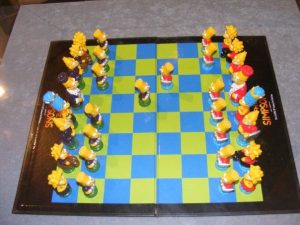
By 2020 it is estimated that there will be 6.1 Billion smartphone users globally, equating to 70% of the worlds’ population owning a mobile device (Mobility Report, 2015). Mobile Health (MHealth) is therefore a technology with a huge potential to reach individuals at a population level.
The use of mobile devices for health encourages behaviour change related to public health, whilst breaking down barriers of accessibility and availability. The scope for use of MHealth includes tracking disease, treating individuals, providing education and intervention and conducting research (World Health Organisation, 2016).
In recent years several mobile apps have been developed as MHealth interventions to help individuals reduce their drinking. However, whilst MHealth interventions have demonstrated efficacy in other areas of behaviour change e.g. sexual health (Levine et al., 2008), smoking cessation (Rogers et al., 2005), weight management (Patrick et al., 2009). Few studies have evaluated mobile technology interventions for alcohol use. A recent review reveals that little is known about the content or mechanisms underlying MHealth apps for reducing alcohol use (Crane et al., 2015). Additionally, it is noted that few of these apps make reference to evidence or use theory.
With smartphone use rapidly growing in young people, the impact of traditional preventative strategies aimed at reducing alcohol and drug use in young people is modest (Tanner-Smith et al., 2015), so MHealth interventions represent a promising and engaging method for reducing alcohol use in young adults. The present study therefore (Carra et al., 2016) aimed to assess the impact of a MHealth app for reducing binge drinking in young adults aged 18-24.

MHealth is a technology with a huge potential to reach individuals at a population level.
Methods
The study used a naturalistic experimental design, achieved by examining variation in exposure to determine the impact of a MHealth intervention. Binge drinking was assessed at pre-/post-intervention in a repeated-measures design.
Participants were recruited in areas with a high density of pubs, clubs and bars in the Greater Milan area. A single screening question was used to determine a “clinically severe population” who had a history of binging on alcohol once in the past 6 months.
Inclusion criteria
- Binging on alcohol once in the past 6 months
- Aged 18-24 years
- Owing a smartphone
Exclusion criteria
- Current and previous treatment for alcohol use disorders
- Current psychiatric condition
- Vision problems
Sample size was determined using a power calculation which found that 589 participants were required to detect a 5% difference in binge drinking between pre- and post-intervention.
Procedure
- Participants were provided with an information sheet and gave written consent for study participation.
- Following screening, researchers provided a definition of binge drinking and asked participants “Did you binge drink in the past two weeks?” (Y/N)
- Researchers introduced the MHealth App and helped participants download the app to their own phone. They checked that participants knew how to use the app. People who agreed to participate received a free t-shirt with the project logo.
- Researchers agreed to call participants after 2 weeks to ask whether binge drinking had occurred during the 2 week intervention period. Participants were asked the same closed ended question “Did you binge drink in the past two weeks?” (Y/N). Participants who answered the call received 10 Euros phone top-up.
- Follow-up at 2 weeks occurred regardless of engagement with the app. Data on the amount of times the app was accessed following initial use was not available.
MHealth App
The intervention is a recently-developed, evidence-based, MHealth app; Digital-Alcohol Risk Alertness Notifying Network for Adolescents and Young Adults (D-ARIANNA).
The app provides a current risk estimate of binge drinking in young adults, examining identified risk/protective factors. Using an algorithm of risk and protective factors the app identifies low, moderate and high risk levels for each individual subject. Ten risk factors and two protective factors were identified:
Risk factors
- Cannabis use (past 30 days)
- Recent binge episodes (past two weeks)
- Interest in discos and parties
- Smoking cigarettes
- Male gender
- Drinking onset at age ≤17 years
- Parental alcohol misuse
- Younger age
- Peer influence
- Impulsivity
Protective factors
- Volunteering
- School proficiency
The app uses a personalised risk communication, such that risk factors that contribute the most to an individual are shown. The D-ARIANNA is free and available on the Google Play and ITunes app stores.
Outcome
Difference in binge drinking rates at baseline and 2 week follow-up after self-administration of the D-ARIANNA.
Data analysis
Data were analysed using a Generalised Estimating Equation (GEE) to examine the 2 week study period. A logistical GEE regression model was used for the binary outcome of “Did you binge drink in the past two weeks?” (Y/N). Risk and protective factors identified in the risk estimation model were also included in the regression, with a stepwise procedure.
Data lost to follow-up were also included. Three analyses of missing data were conducted:
- Missing completely at random (non-response is not dependent on outcome or covariate)
- Simply at random (non-response is dependent on covariates and outcome values)
- Not at random (non-response depends on the value of the outcome itself).
Not at random analyses were divided into three assumptions:
- All drop-out participants were binge drinkers
- All drop-outs abstained
- “Last observation carried forward”.
Analysis of how estimates would change under each of these parameters were performed.

This naturalistic experimental study did not include a control group. Find out why it’s important for treatments to be compared fairly.
Results
Screening and follow-up
Of the 590 eligible participants, who reported binge drinking at least once in the past 6 months, 224 reported binge drinking at least once in the past 2 weeks at baseline.
Binge drinking data for 38 (17%) of the 224 participants who reported binge drinking in the past two weeks and for 45 (12%) of the 366 who did not report binge drinking in the past two weeks were not available after completion of the intervention. Therefore follow-up data were available from 507 participants.
Participants who dropped out of the study were more likely to have a background of immigration and less likely to live with their parents.
D-ARIANNA impact on binge drinking
Of the 507 participants with complete follow-up data, 186 participants (37%) had at least one binge drinking episode 2 weeks before baseline and 90 participants (18%) in the 2 weeks before follow-up.
GEE models compared follow-up drinking data with baseline and took into account risk and protective covariates for binge drinking.
Under the completely missing at random assumption analysis, the use of the D-ARIANNA was associated with a reduction in the proportion of participants who had binged in the 2 weeks prior to follow-up (OR 0.36; 95% CI 0.29 to 0.45, p < .001). This was similar for those lost simply at random (ORs (95% CI) of 0.38 (0.29 to 0.51) and 0.40 (0.31 to 0.50).
The assumption that all drop-out participants were binge drinkers gave a worst case scenario of OR 0.68; 95% CI 0.55 to 0.83. The assumption that all drop-outs abstained gave the best case scenario of OR 0.30; 95% CI 0.23 to 0.37. The last observation carried forward gave an OR of 0.45; 95% CI (0.37 to 0.55).
Main findings
A naturalistic experiment of an MHealth intervention for risk alertness revealed a beneficial impact of the mobile app in reducing the rate of binge drinking in a population of young adults.
After a 2 week period of self-administering the D-ARIANNA app, young people showed a reduction in binge drinking from baseline (37% of participants) to follow-up (18%). This was confirmed by a conservative last observation carried forward model that demonstrated a reduction in binge drinking after use of the app.

After using the D-ARIANNA app for 2 weeks, young people showed a reduction in binge drinking from baseline to follow-up, but are these results reliable?
Limitations
The above mentioned findings should be interpreted in light of the following methodological limitations:
- Firstly the study did not use a control group in the quasi-experimental investigation. The absence of a control group makes it very difficult to attribute the reduction in binge drinking to the app itself. Perhaps just participating in the study made individuals aware of their drinking and resulted in a reduction of binge drinking. The inclusion of a control group would have enabled the authors to confidently state that the app resulted in a reduction in binge drinking that would not have happened otherwise. This is particularly important in this study where data were not available on how many times participants actually accessed the app. It is possible that many participants did not access the app at all and the observed reduction in binge drinking was indeed due to some other variable.
- Secondly, the paper reports on the effects of a MHealth intervention on reduction of binge drinking in young adults that have binged on alcohol at least once in the past 6 months. As the authors point out “binge drinking” is a complex term. It is also a term on which few researchers can agree. For the present study a binge is referred to as; “Four or more drinks for women and five or more drinks for men on a single occasion”. A quick search of the literature offers numerous definitions, including: “…A pattern of drinking that brings blood alcohol concentration (BAC) levels to 0.08 g/dL. This typically occurs after 4 drinks for women and 5 drinks for men—in about 2 hours” (National Institute on Alcohol Abuse and Alcoholism) and “…Consuming eight or more units in a single session for men and six or more for women” (National Health Service).
With so many definitions, interpretation of findings from the present study and comparison with previous studies can be difficult. Also, binge drinking can be influenced by factors including an individuals’ tolerance to alcohol and their rate of consumption that are not mentioned in the present study.
- Thirdly, the study reports a reduction in binge drinking from baseline (37% of participants) to follow-up (18%). However, it is not clear if the participants who reported binge drinking in the past two weeks at baseline were the same participants who reduced their binge drinking at follow-up. It would be very interesting to know what percentage of those who were binge drinking at baseline, used the app and a result reduced their binge drinking.
Conclusions
The present study reports preliminary data in support of a MHealth app for reducing binge drinking in young adults. The paper has some significant methodological flaws which limit the interpretation and application of these findings.
Whilst MHealth apps represent a remote, low cost intervention for reducing drinking in young people, more research is required to establish the benefit of such apps against a control intervention, and across different types of drinking behaviour beyond binge drinking.

MHealth apps need to be tested robustly before they can be proven to be safe and effective.
Links
Primary paper
Carrà et al (2016) Impact of a Mobile E-Health Intervention on Binge Drinking in Young People: The Digital–Alcohol Risk Alertness Notifying Network for Adolescents and Young Adults Project, Journal of Adolescent Health, Volume 58, Issue 5, Pages 520-526. http://www.sciencedirect.com/science/article/pii/S1054139X16000252
Other references
Mobility Report (2015) https://www.ericsson.com/mobility-report
World Health Organisation (2016) http://www.who.int/topics/ehealth/en/
Crane et al (2015) Behavior Change Techniques in Popular Alcohol Reduction Apps: Content Analysis. J Med Internet Res,17(5):e118
Levine et al (2008) A sexual health text messaging service for San Francisco youth. American Journal of Public Health. 98(3):393. [PubMed abstract]
Patrick et al (2009) A text message–based intervention for weight loss: Randomized controlled trial. Journal of Medical Internet Research. 11(1) [PubMed abstract]
Rodgers et al (2005) Do u smoke after txt? Results of a randomised trial of smoking cessation using mobile phone text messaging. Tobacco Control,14(4):255 [PubMed abstract]


Today I blog for the @Mental_Elf on a mobile app to reduce binge drinking in young adults https://t.co/WP0P6mcPZk
Mobile app for reducing binge drinking in young adults: better evidence needed https://t.co/zJXX3Vepy2 #MentalHealth https://t.co/HI1PxuH4O0
Today @SallyScientist on the D-Arianna app for reducing #BingeDrinking in young people https://t.co/vhFUQxwnrN #mhealth #alcohol
We need better quality #mhealth research, argues @SallyScientist in today’s blog about alcohol use in young people https://t.co/vhFUQxwnrN
Why should #mhealth research include a control group?
https://t.co/PDlX0x6txQ https://t.co/tBi2bYiO5r
RT Why should #mhealth research include a control group?https://t.co/MLl9PsOVg5
Mobile app for reducing binge drinking in young adults
More evidence needed
@pash22 https://t.co/rEQQaocodb
RT We need better quality #mhealth research, argues SallyScientist in today’s blog about alcohol use in young peo… https://t.co/T2MK6DUnoV
Don’t miss:
Mobile app for reducing #BingeDrinking in young adults
https://t.co/bumA1rn2AU
#EBP https://t.co/PRQjz5iABP
RT RT We need better quality #mhealth research, argues SallyScientist in today’s blog about alcohol use in young … https://t.co/T2MK6DUnoV
RT RT RT We need better quality #mhealth research, argues SallyScientist in today’s blog about alcohol use in you… https://t.co/T2MK6DUnoV
RT RT RT RT We need better quality #mhealth research, argues SallyScientist in today’s blog about alcohol use in … https://t.co/T2MK6DUnoV
Mobile app for reducing binge drinking in young adults via vondewall https://t.co/ztDe0KqNtg
[…] Mobile app for reducing binge drinking in young adults: better evidence needed – Additionally, it is noted that few of these apps make reference to evidence or use theory. … […]